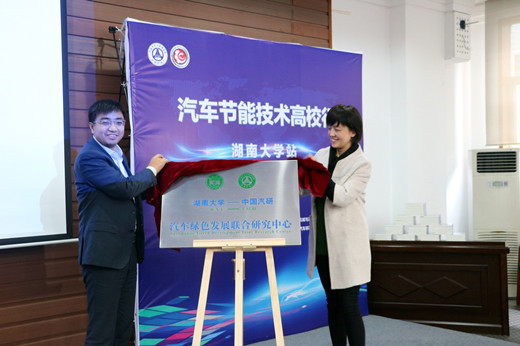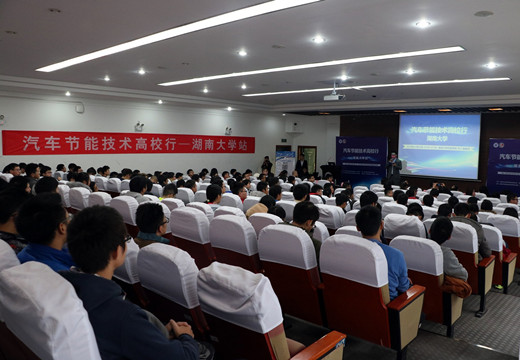
HNU-CAERI Automobile Green Development Joint Research Center was established in Hunan University (HNU) on the afternoon of December 18, 2016. An “Automobile Energy-saving Technology Presentation in Universities” event was also launched simultaneously.
Managers of China Automotive Engineering Research Institute (CAERI) Co., Ltd, TOTOYA Motor Technical Center (China) Co., Ltd., and Robert Bosch Starter Motors Generators (China) Co., Ltd., as well as teachers and students from HNU College of Mechanical and Vehicle Engineering, attended the establishment ceremony.

HNU and CAERI representatives unveiled the nameplate of this new research center, and signed an industry-university-research cooperative report. CAERI technical and economic consultation department and HNU Automobile Life Circle Assessment Center jointly set up an interest group of automobile industry.
Mr. Hu Qingao, director of CAERI energy-saving and new energy project, Ito Takekazu, director of TOTOYA Motor Technical Center (China), and Zhang Chuan, product manager of Robert Bosch Starter Motors Generators (China), respectively delivered keynote reports, themed on “Chinese automobile energy-saving technology development and trends”, “Toyota automobile engine technology research and progress”, and “Saving fuel and cutting emission during driving and start-stop”.
The “automobile energy-saving technology presentation in university” event was inaugurated in HNU, initiated by the CAERI. Upon establishment, the HNU-CAERI Automobile Green Development Joint Research Center will facilitate cooperation of HNU and CAERI in in-depth research, academic exchange, and talent cultivation.
The event, responding to the national “Made in China 2025” strategic demands on automobile industry, and energy saving and emission cutting trend, called for attentions to automobile energy-saving technology. It will provide a platform for university-enterprise and industry-university-research integration, so as to promote a sound and rapid development of China’s automobile energy-saving technology.
